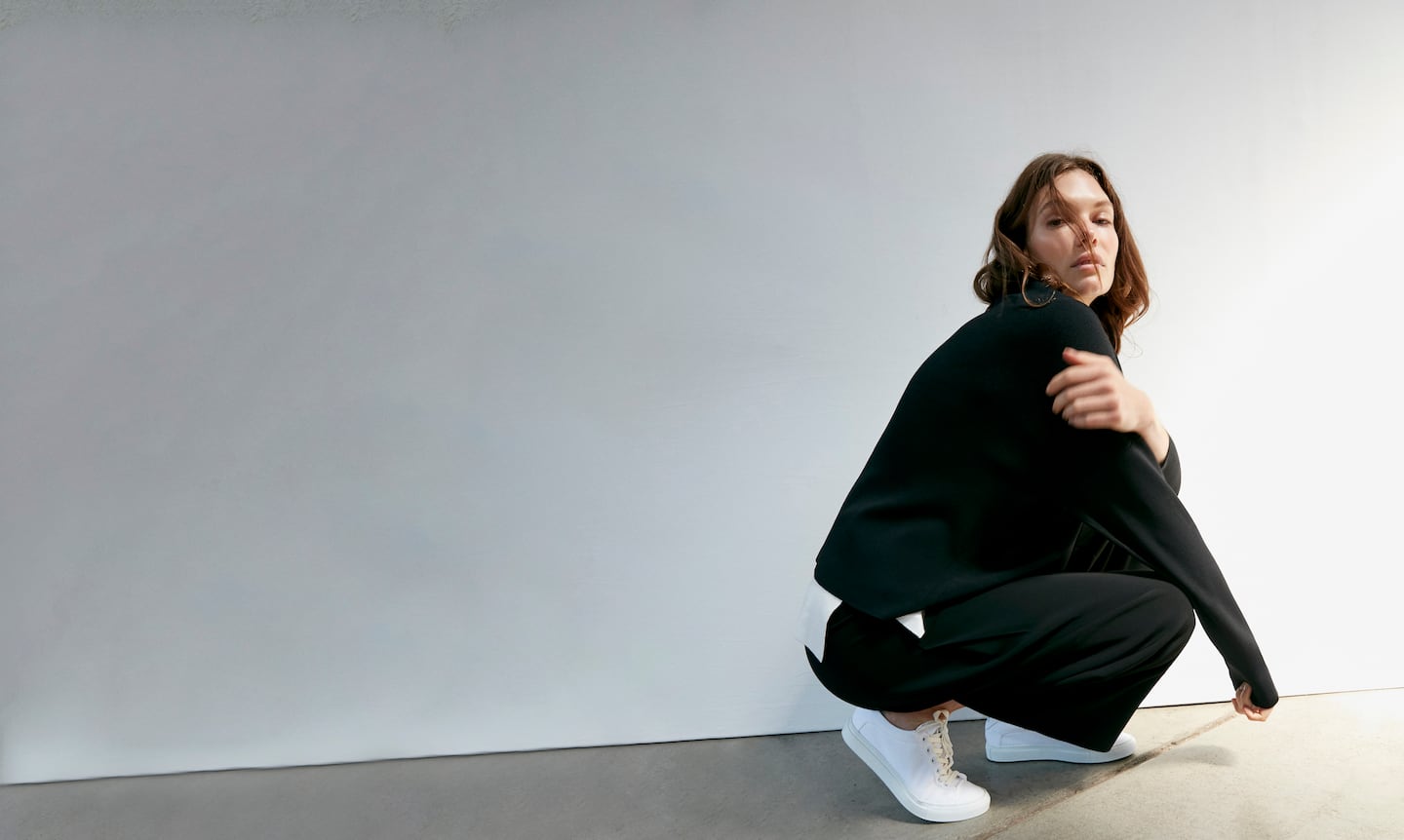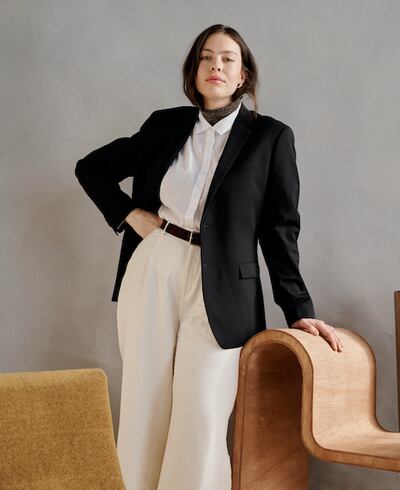
The Business of Fashion
Agenda-setting intelligence, analysis and advice for the global fashion community.

Agenda-setting intelligence, analysis and advice for the global fashion community.

Like millions of American women, Jillian McMenamin spent much of 2020 unemployed. A 14-year public relations veteran, she was laid off last January and unable to find a new job given the high level of furloughs in PR, not to mention navigating her two children’s virtual schooling schedules.
But McMenamin just landed a new gig and plans to shop for work clothes — except her needs have changed.
“I used to wear dresses to the office every day, but my new company doesn’t even have an office,” she said. “I am looking forward to dressing up for meetings I’m going to have with clients face-to-face once or twice a week, but I don’t think I’d go as far as a dress anymore.”
McMenamin’s changing tastes represent a new reality, one that workwear brands must adjust to. Lockdowns accelerated the casualisation of workwear, putting remote workers in sweatpants. Women who will return to the post-pandemic office — or those who have shifted to a freelance lifestyle — won’t have the same need for a robust office wardrobe. Fashion can no longer rely on the once-ubiquitous pencil skirts and shift dresses.
ADVERTISEMENT
“Work looks and feels different now,” said Kathy Gersch, a retail consultant. “Virtual work and flexible hours aren’t going to go away. Brands that believe old patterns will revive will fall by the wayside.”
The workplace has altered significantly for women in America, and their wardrobe choices are changing with it. Workwear brands must adapt their product to new standards and employ a fresh marketing strategy for women ready to shop.
New Work, New Wardrobe Needs
Covid-19 has disproportionately impacted women, with furloughs, layoffs and caregiving responsibilities forcing them out of jobs. Nearly 2.4 million women have dropped out of the workforce since February 2020, according to the Bureau of Labor Statistics. Vice President Kamala Harris called the issue a “national emergency.”
In lieu of more traditional opportunities, many women are starting their own businesses or joining the gig economy. Allbright, a professional women’s network, told The Washington Post that one in four of its members plan to launch new businesses and a survey done last month by the National Association of Women Business Owners found that 35 percent of minority women who started new businesses during the pandemic did so out of necessity. The number of women who joined Uber Eats as delivery workers doubled from April 2020 to January 2021.
Work looks and feels different now. Virtual work and flexible hours aren’t going to go away.
These employment changes will affect workwear sales. Women who work for themselves won’t have to abide by corporate dress codes, and gig workers on the move won’t have a need for blazers and suiting separates.
Even for women who still work in more traditional jobs, wardrobe preferences have shifted. Many companies are letting employees choose to work remotely or embrace a hybrid model, which will keep the inclination toward casual styles going. Workwear startup M.M.LaFleur, which first launched in 2013 with a line of seven work dresses, now only sees 15 percent of its sales coming from dresses.
Instead, M.M.LaFleur is emphasising its “power casual” category, which includes stretch culottes, ribbed elastic-band skirts and cotton t-shirts. The line, which debuted in 2017, was meant to cater to women working in tech in San Francisco, not corporate America. But the brand spent 2020 adding new, lounge-friendly styles, and its “power casual” category now accounts for 60 percent of its sales.
ADVERTISEMENT
“Even our most conservative-dressed customer base, our lawyers are telling us they won’t wear full-on work dresses anymore,” said founder Sarah LaFleur.

Similarly, Banana Republic’s new workwear collection features wide-legged pants with elastic sides and machine-washable, unstructured blazer, “a far cry from black, grey, navy suits, because women in the workforce are thinking about comfort,” said chief brand officer Ana Andjelic.
But while the appetite for casual pieces remains, the return of statement pieces is also underway. Retail sales rose nearly 10 percent in March, according to the US Department of Commerce and brands like Kohl’s, American Eagle and H&M saw skirt sales spike. Andrea Wasserman, a marketing and retail consultant, said these sales show a consumer desire to get back to normal life — good news for workwear brands.
“There’s going to be more of an interest to dress up for work, even if work has a hybrid model,” Wasserman said. “The days in the office or the meeting with the client will be met with enthusiasm.”
Brands are banking on consumers wanting statement items. Andjelic said Banana Republic’s fall collection prominently features bright colours, while LaFleur said she’s working on a line of statement work jackets.
Karinna Nobbs, a creative marketing consultant and fashion futurist, said consumers will likely view these pieces as occasional splurges, rather than staples.
“The consumption mood has really changed, and people will want fewer pieces,” she said. “This might mean they’ll spend more on it sometimes, but the wardrobe will become refined.”
Making Marketing Changes
ADVERTISEMENT
The immediate challenge facing brands now is getting women to shop for a category they largely abandoned over the past year. For one, women looking to get back into the workforce face unique spending challenges, said Jasmine Tucker, the director of research at the National Women’s Law Center.
“There’s a lot less disposable income right now because people are still trying to catch up on rent, bills and other necessary items,” said Tucker. “There’s also a suspicion that women who will re-enter the workforce will do so at a lower level because they’ve been out of work for so long.”
LaFleur said her brand will hype up the workplace to inspire consumers to shop for work clothes. “I think people are really scared to go back to the office,” she said. “The idea is to use clothing as armour, and remind people that they can feel and look great, and present well in the office.”
The company will run marketing campaigns in June with positive messaging around the office. An approach like this, according to Wasserman, is more effective than marketing work clothing as athleisure, which she said “has gotten stale.”
“People will want to put their best foot forward,” she said. “They don’t want the same clothing for work and workouts anymore.”
People will want to put their best foot forward. They don’t want the same clothing for work and workouts anymore.
Additionally, brick-and-mortar presents an opportunity to connect with consumers venturing out of their homes once again. But customers returning to stores aren’t coming to just browse, but are also craving experiences after a year of lockdowns, said Gersch.
Gersch added that brands should focus on catering to workwear shoppers in-stores. She recommends brands double down on personal shoppers and add new technologies like mobile checkout.
“The in-store experience during the pandemic has been very clinical, and wasn’t an experience where people were getting help, so turning the store into a place where shoppers get help will be important,” said Gersch. “The people that are coming back to the stores want curation and inspiration. They want what they haven’t had.”
Related Articles:
What Beauty Products Will Consumers Buy in 2021?
The rental platform saw its stock soar last week after predicting it would hit a key profitability metric this year. A new marketing push and more robust inventory are the key to unlocking elusive growth, CEO Jenn Hyman tells BoF.
Nordstrom, Tod’s and L’Occitane are all pushing for privatisation. Ultimately, their fate will not be determined by whether they are under the scrutiny of public investors.
The company is in talks with potential investors after filing for insolvency in Europe and closing its US stores. Insiders say efforts to restore the brand to its 1980s heyday clashed with its owners’ desire to quickly juice sales in order to attract a buyer.
The humble trainer, once the reserve of football fans, Britpop kids and the odd skateboarder, has become as ubiquitous as battered Converse All Stars in the 00s indie sleaze years.